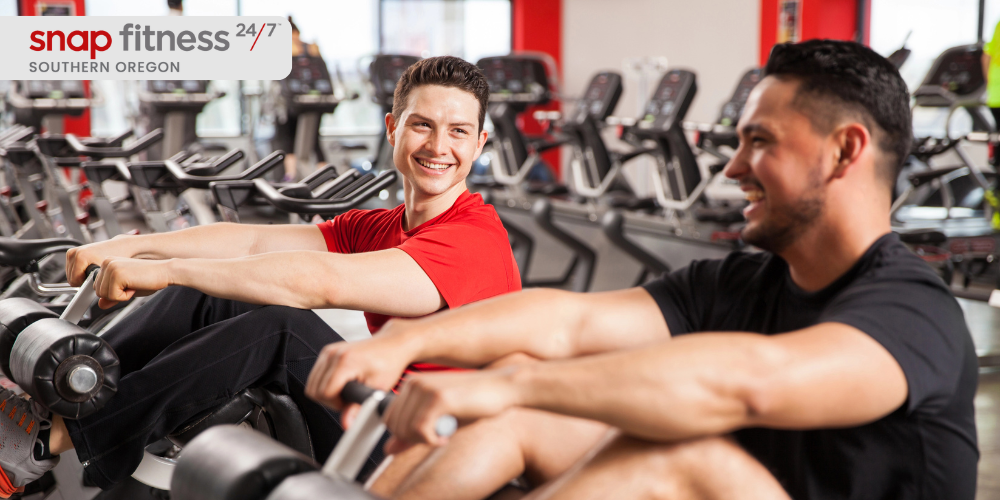We’ve all been there — powering through a workout when something just doesn’t feel right. Maybe it’s a sharp twinge in your knee during squats or a stubborn ache in your shoulder while lifting weights. You think, “I can push through this,” but ignoring those signals can do more harm than good.
Pain isn’t weakness — it’s communication. Understanding what your body is trying to tell you is key to staying active, healthy, and injury-free all year long, especially with Southern Oregon’s active lifestyle. Whether you’re training for a hike in the Ashland hills or hitting an early morning class at your local Snap Fitness, your progress starts with smart, safe movement.
Let’s break down how to notice, navigate, and manage pain before it leads to injury.
First, Know the Difference Between Soreness and Pain
Mild muscle soreness (think: the kind you get after trying a new workout or increasing weights) is customary and even expected. But sharp, sudden, or persistent pain is a red flag.
Here’s a quick way to tell the difference:
Soreness: Feels like tightness, dull ache, or mild discomfort that shows up a few hours after working out, typically improves with movement.
Pain: Feels sharp, stabbing, or burning during or after movement, often worsens with activity and doesn’t go away with rest.

If it’s pain, it’s time to press pause — not push through.
Smart Moves: How to Keep Progressing Without Pushing Past Your Limits
Instead of stopping altogether, try making simple adjustments to keep moving while managing discomfort safely. Here are a few ways to modify your routine:
Scale Back Temporarily
Reduce the weight, limit the reps, or shorten your workout duration. Listen for feedback from your body and gradually reintroduce intensity when things feel better.
Use Exercise Modifications
Swap out high-impact movements for joint-friendly alternatives. For example:
– Replace running with brisk walking or cycling
– Trade squats for wall sits
– Use resistance bands instead of heavy weights

Ask a Trainer for Help
At Snap Fitness Southern Oregon, our personal training services are designed to help you train smarter. A certified trainer can show you proper techniques, guide you through modifications, and build a routine that supports your injury recovery goals.
Quick Tips for Safe, Pain-Free Workouts
Keep your body feeling good and ready for anything Southern Oregon life throws your way:
– Warm Up First: A 5–10 minute warm-up (think dynamic stretching or a light cardio warm-up) preps your muscles and joints.

– Stay Hydrated: Dehydrated muscles are more prone to cramps and strains — especially during warmer months on the Rogue Valley trails.
– Rest When Needed: Rest days are part of progress. Muscle repair and injury recovery happen off the gym floor.
– Pay Attention to Patterns: If the same pain pops up during a particular move, it’s time to rework your form or replace the exercise.
Feel Good, Move Well — the Snap Fitness Way
Fitness doesn’t have to hurt to work. Whether you’re logging early-morning lifts at our 24-hour gym in Medford or sticking to gentle movement while recovering, you don’t need to choose between staying active and staying safe.
Let’s help you find a rhythm that works with your lifestyle — not against it. Stop by your nearest Snap Fitness Southern Oregon location today and talk with a team member about our gym membership options or personal training services. Together, we’ll make sure pain doesn’t get in the way of progress.
You’ve got this — feel good, move well, and we’ll see you in the gym.

